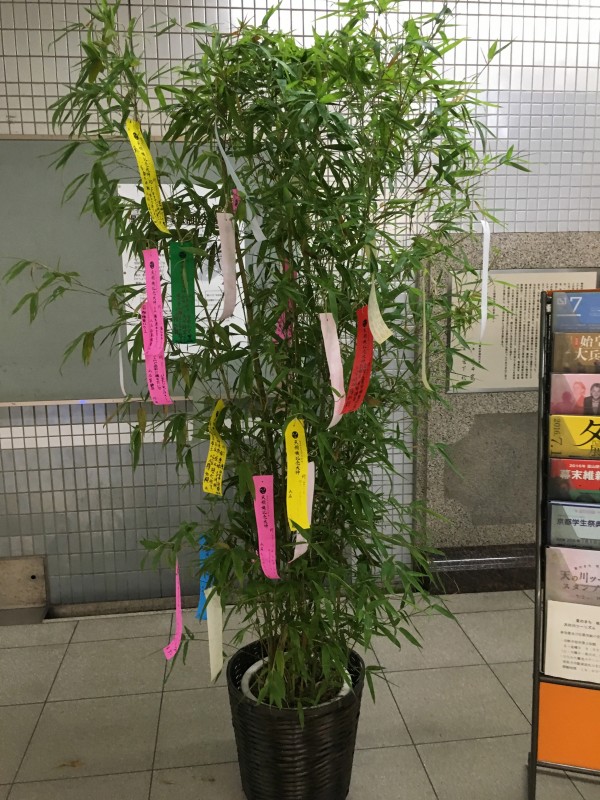
My local station (Demachiyanagi in Kyoto) has put up this attractive looking arrangement next to its information rack. What’s that all about your may wonder? Well, thereby hangs a tale of star-crossed lovers…
Seven is a magic number, and double seven doubly so. In Daoism it’s part of the 3-5-7 odd numbers that denote dynamism. It’s said too to be related to the phases of the moon, with the lunar cycle of 28 days being split into quarters of seven days – hence the length of the week. Lucky seven is written deep into the culture: seven ages of Man, 007, seven dwarves of Snow White, seven brides for seven brothers, seventh son of a seventh son.
So why not make your 7/7 a little bit special this year? Read on, and you may find out how…..
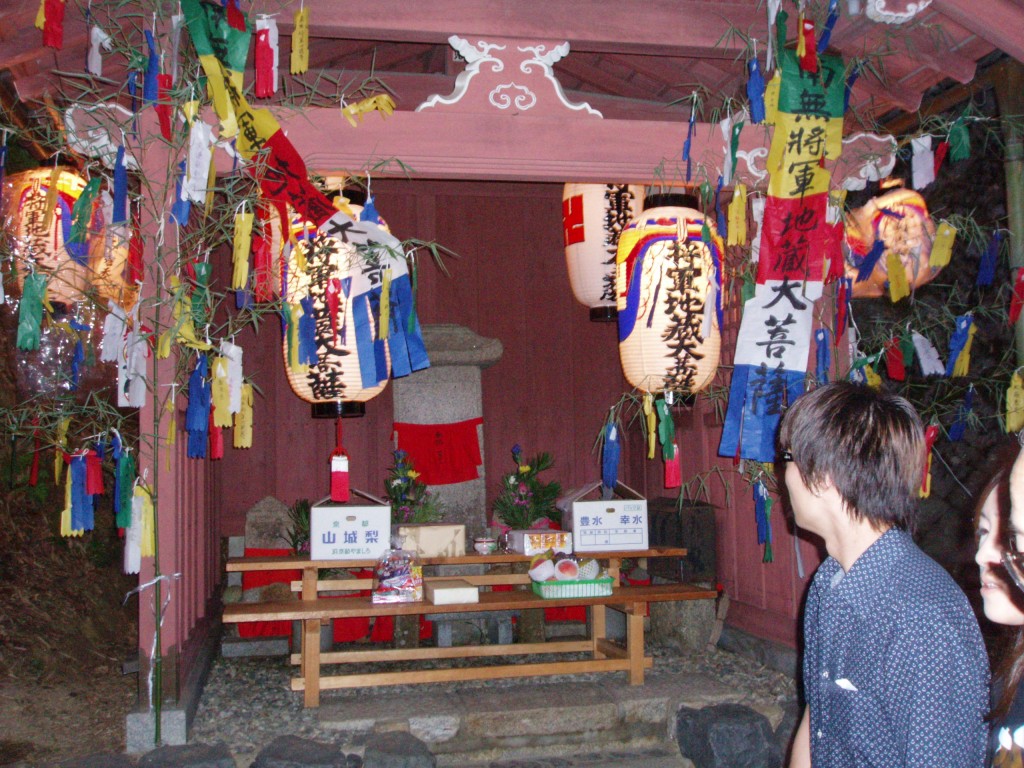
7/7 sees decorations up around Japan to celebrate a celestial coming together
Stars and constellations had a close connection with the spirituality of early Man. ‘It’s written in the stars,’ goes the old saying. Tanabata is a clear example. It concerns two lovers represented by two different constellations, which are separated by the Milky Way but able to meet once a year. By way of celebration, people write poems or their wishes on strips of brightly coloured paper which are tied to bamboo.
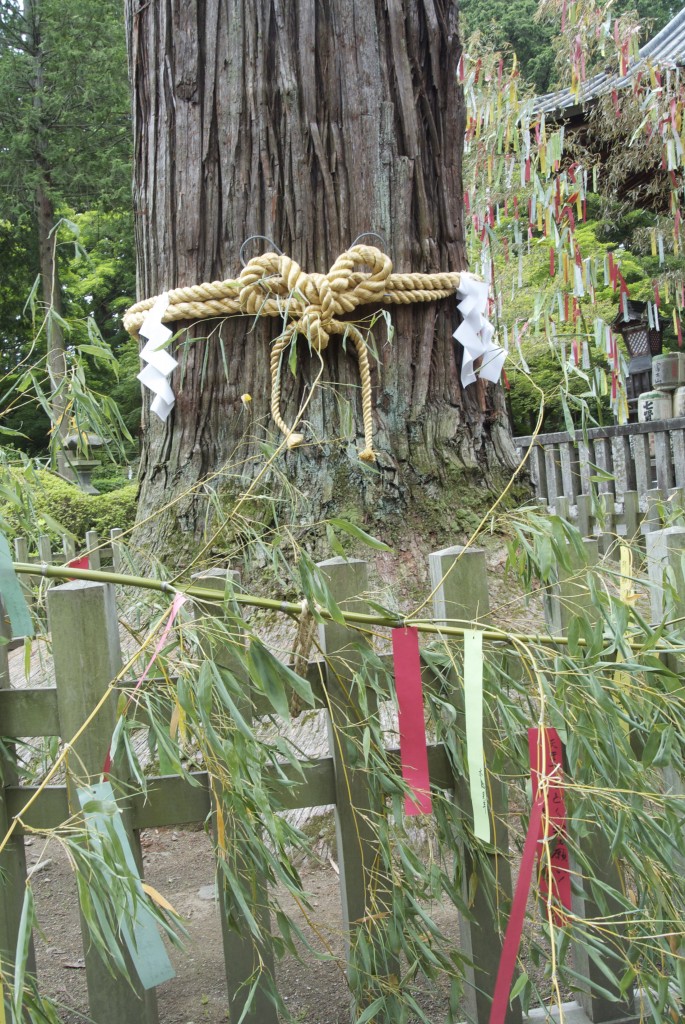
Tanabata decorations around a sacred tree at Fuji Sengen Jinja
Like much of ‘Japanese tradition’, it has its origins in China. It was first mentioned in the 7th century, and later during the Tokugawa period it became established as one of the ‘five seasonal feasts’. These included New Year’s Day (1/1); Kyokusui no en (Poetry writing) (3/3); Boys Festival (5/5); and the Festival of Chrysanthemums (9/9). Things have changed since then, but the Tanabata tradition carries on.
Here is what the authoritative Kokugakuin encyclopedia has to say on the subject:
According to an ancient Chinese story, two lovers—the Herdsman (Altair in the constellation Aquila) and the Weaver woman (Vega in the constellation Lyra)—traversed the sky separately and could cross the Milky Way and be together but once a year provided the sky was clear. This day was called Qi Xi, or “seventh night” (read tanabata in Japanese).
A similar myth existed in Japan about the saintly maiden weaver, Tanabatatsume (lit. ‘girl of the shelved loom’), who awaits her annual one-night visit from a kami at her hut by the river (that is, the Milky Way), and this fused with the Chinese tale of the Weaver woman.
Prayers at Kitaguchi Hongu Fuji Sengen at Tanabata time
Also related to this celebration is a festival called kikōden, during which women pray for improvement in their weaving and calligraphy skills. At the court during the Heian period, they would skewer various foods from land and sea such as pears, peaches, and dried bream on seven gold and seven silver needles and threading them with five-colored string (blue, yellow, red, white, and black) to use as a tanabata offering. A banquet would also be held during which the emperor would observe the meeting of the stars, and performances of poetry, songs, and instrumental music would take place.
Nowadays on Tanabata, people commonly write poems or wishes on fancy strips of paper (tanzaku) and cut stars and other shapes out of brightly colored paper, and use these to decorate a stalk of bamboo. The decorated stalks are customarily released into rivers, streams, and the sea the next morning. Some believe this practice is the product of the spread of lessons in reading and writing during the Edo period.
In some areas, horse-shaped puppets or other objects are substituted for bamboo stalks, and in others, the celebration involves a lighting of torches. Regardless of these variations, the celebrations that mark Tanabata are another example of an event wherein people welcome the kami and their ancestors for the occasion and send them away after they have spent the night.
***************************************************
Wikipedia also carries a full page of information on the subject, including this rather interesting titbit…
In 2008, the 34th G8 summit in Tōyako, Hokkaidō coincided with Tanabata. As host, Japanese Prime Minister Yasuo Fukuda invited the G8 leaders to participate in the spirit of the festival. They were each asked to write a wish on a piece of paper called tanzaku, to hang the tanzaku on a bamboo tree, and then to take the necessary actions to change the world for better. As a symbolic gesture, the actual writing and the act of hanging up that note is at least a first step.
The Japanese Ministry of Foreign Affairs made colored strips of paper and a bamboo tree for G8 wishes available in Roppongi during the summit. Protesting organizations in Sapporo during the G8 summit also tried to use the spirit of Tanabata to focus attention on a somewhat different set of wishes. Non-governmental organizations like Oxfam, and CARE International set up an online wish petition campaign to coincide with the G8 Summit and Tanabata.
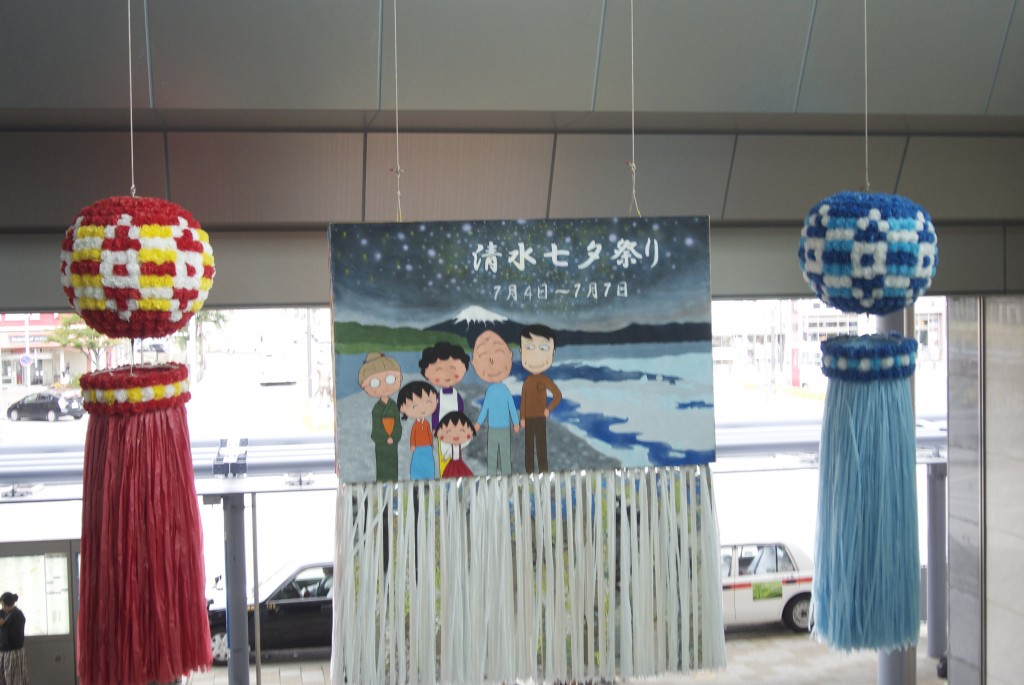
************
For one of the best and fullest accounts of Tanabata, please see Megan Manson’s neopagan-Shinto website.
This year astronaut Onishi Takuya, about to head off to the stars himself for four months, made the headlines by saying that he too was wishing on a star for Tanabata – see here.

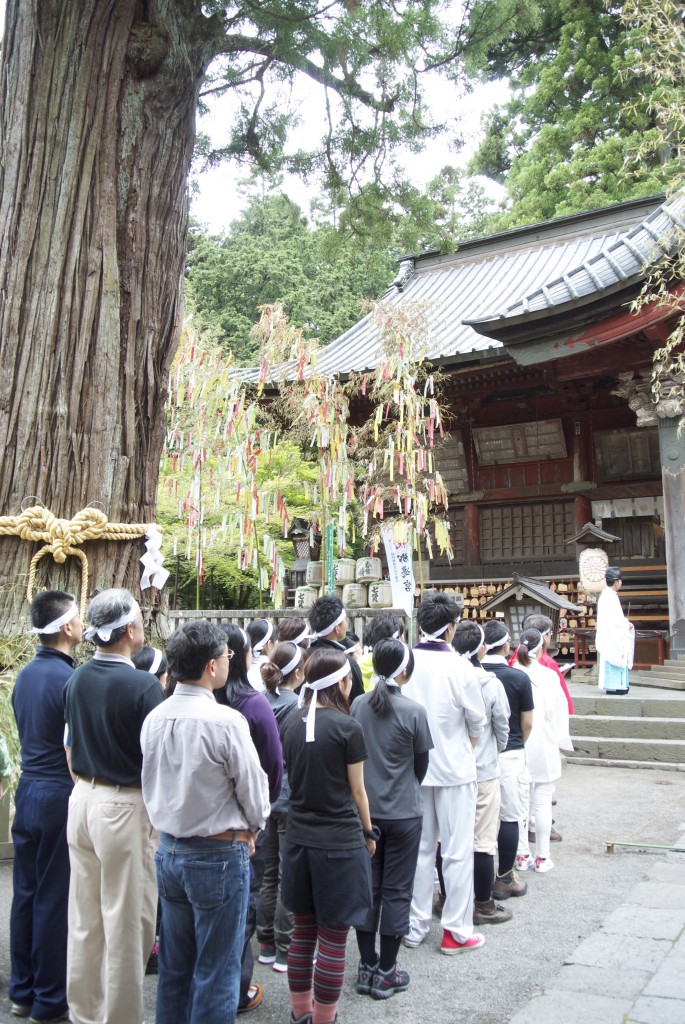
It’s been great being in Japan during June and July to be part of the preparations and celebrations of various festivals. With Tanabata it’s important to note I feel that it was originally celebrated on a different date in Japan, prior to the imposition of the Gregorian calendar by the Meiji government. In Kyoto the Reizei family still held their Tanabata celebrations on the original lunar calendar date in August. This is when the Tanabata stars Vega and Altair are closest in the sky. As Megan points out, in China and Korea the event is also still celebrated in August. The planned events in August over 10 days during the Kyo-no-Tanabata festivities at the Horikawa Site in Kyoto sound charming. I’ll be back in Tasmania by then so will have to imagine it from afar. The different dates don’t detract from the current celebrations. It is another example of the major changes that occurred in Japan nearly 150 years ago. The Wikipedia entry on the Japanese Calendar has some interesting commentary about the timing of festivals such as Obon given the differences with the Gregorian calendar.
Great information, Jann, thanks very much for that. It seems you’ve put your time in Japan to very good effect indeed. Incidentally the schedule for events at the Horikawa site can be found here: http://www.kyoto-tanabata.jp/en/horikawa/
I found another interesting connection to Tanabata online today John. The Seimei Shrine have an online presence where you can ‘Send Wishes to the Stars’ over both the Gregorian and lunar calendar period that Tanabata falls in! So it is trying to accommodate the best of both worlds. The special internet site is called “Hoshi ni Negai wo”. As of this moment they have 1169 wishes. This is the website that I found the information on in English: http://otakumode.com/news/577338ab97d19ef4448852c1 (people may have to cut and paste this). This site takes people through to the home website and information in Japanese.
Excellent information, Jann, and many thanks for taking the trouble to send that in. I’ll repost it next year so people have a chance to make their wish even from abroad…
Large-scale Tanabata festivals are held in many places in Japan, mainly along shopping malls and streets, which are decorated with large, colorful streamers.